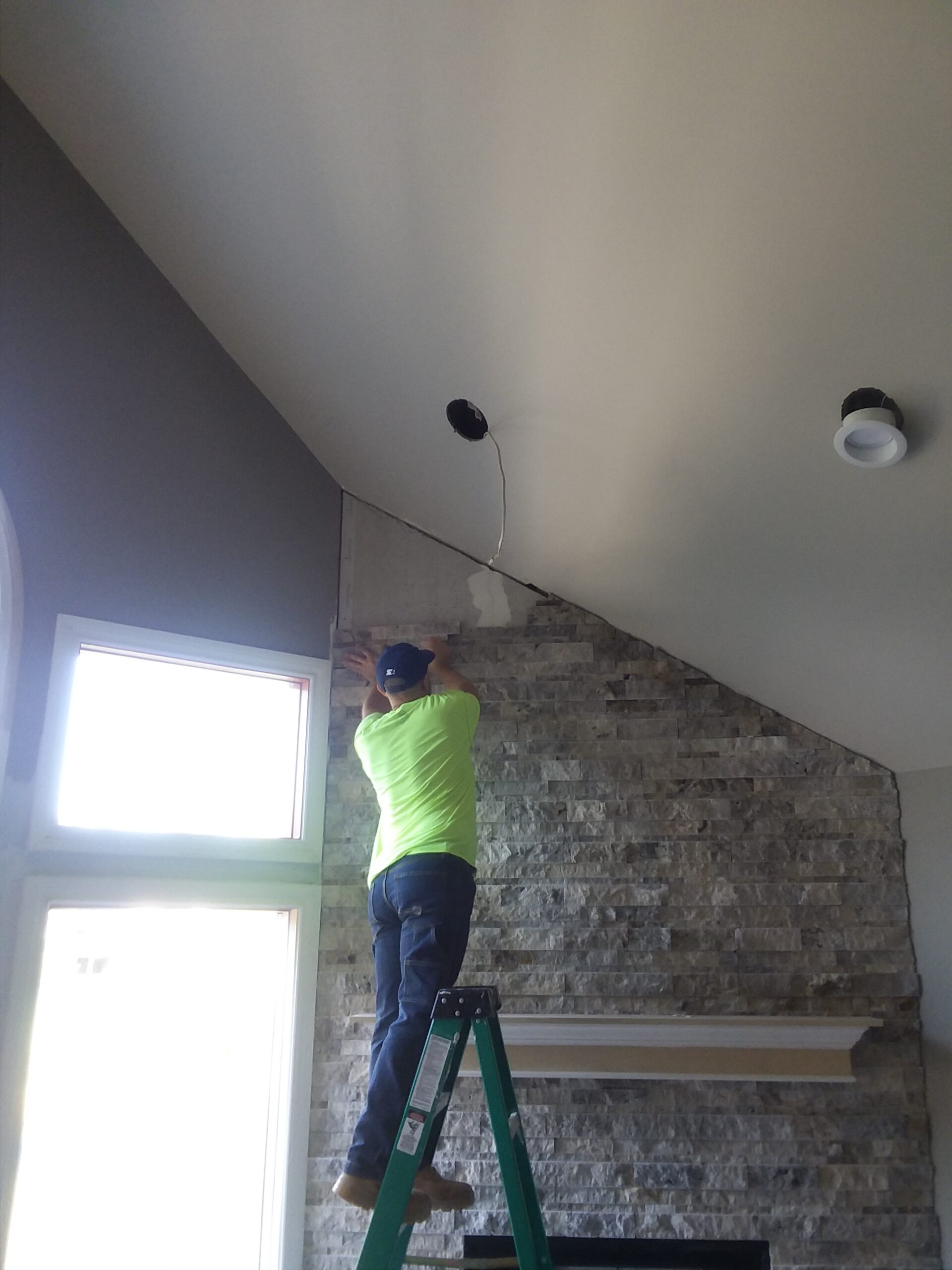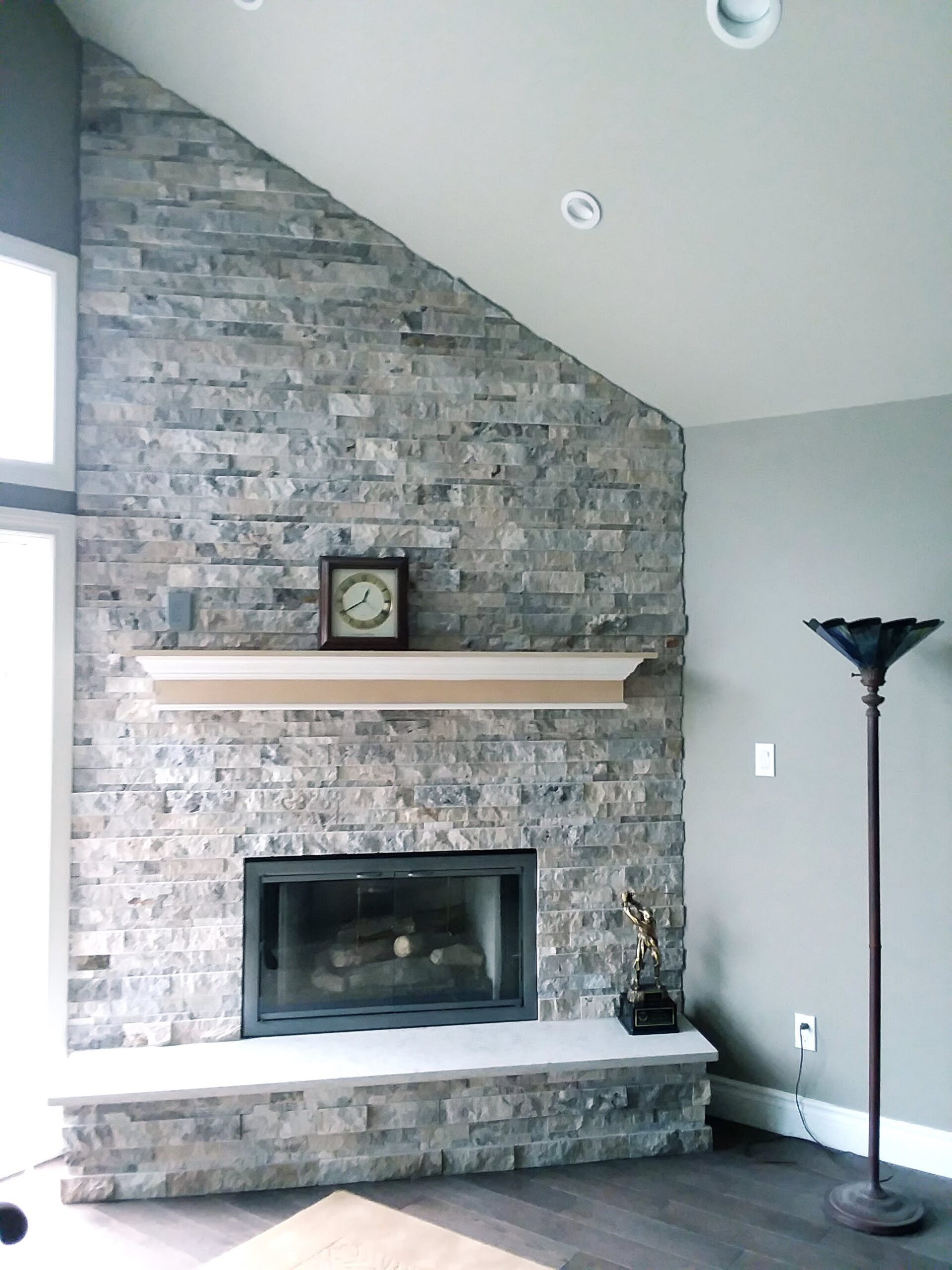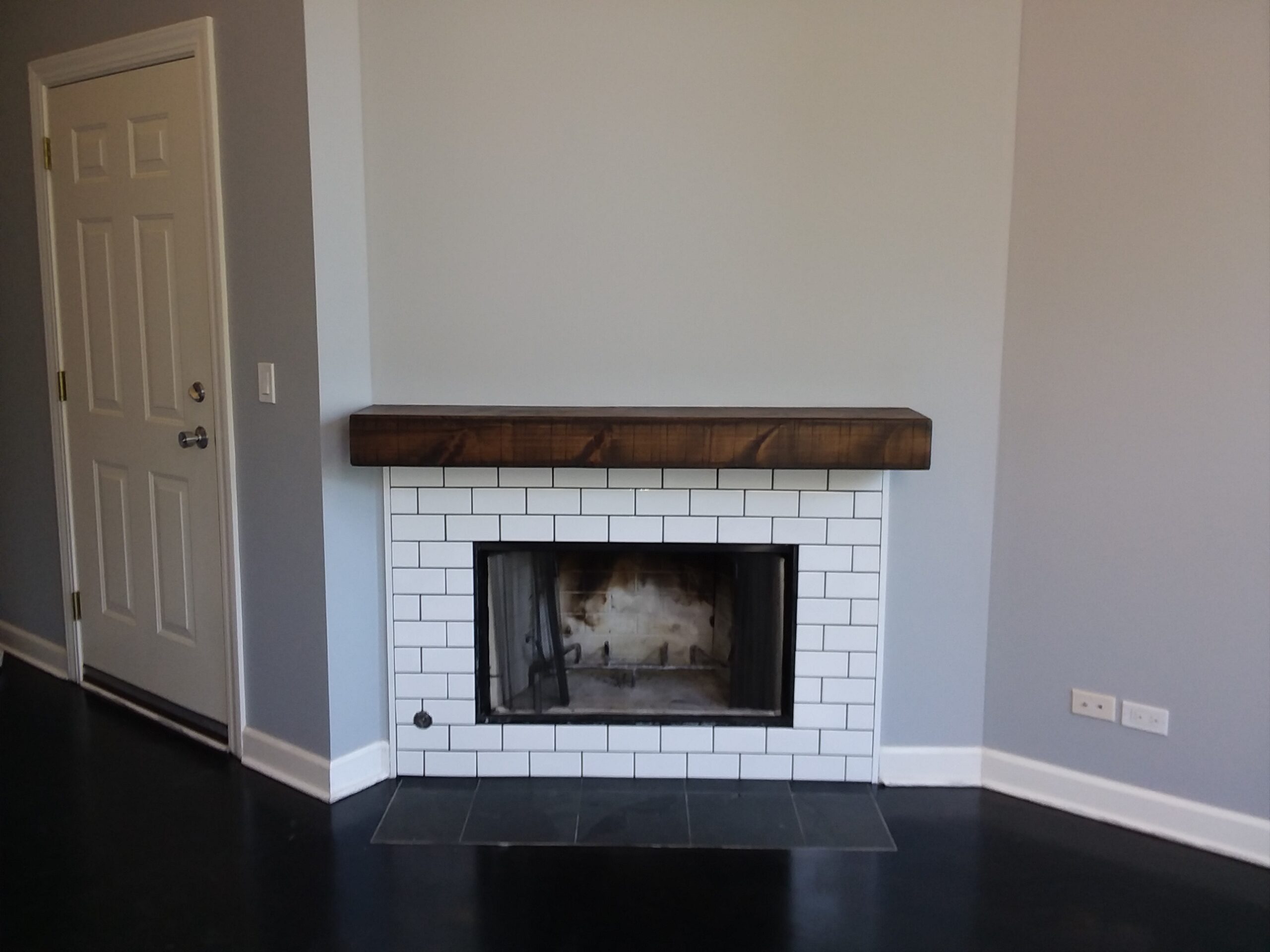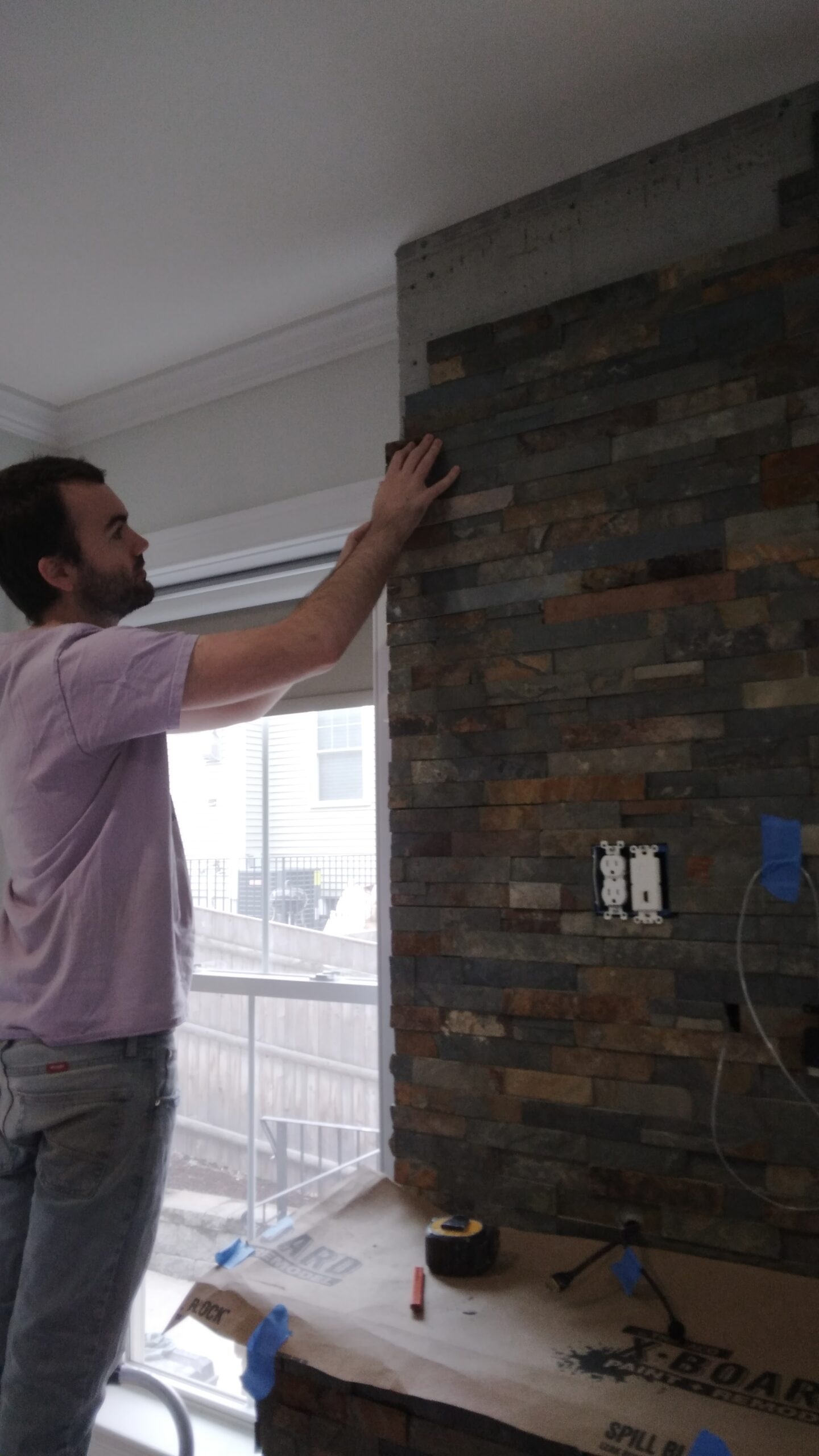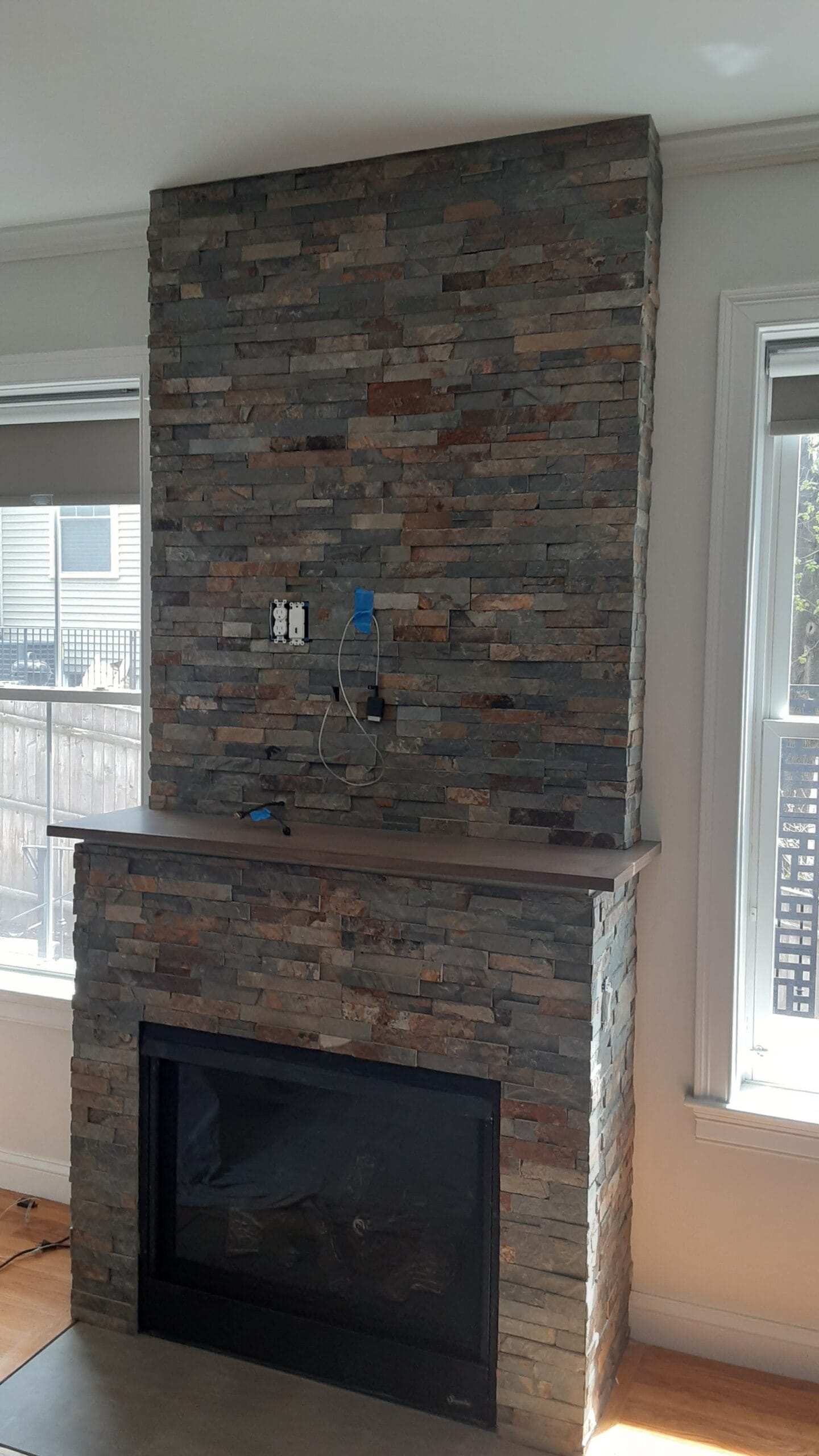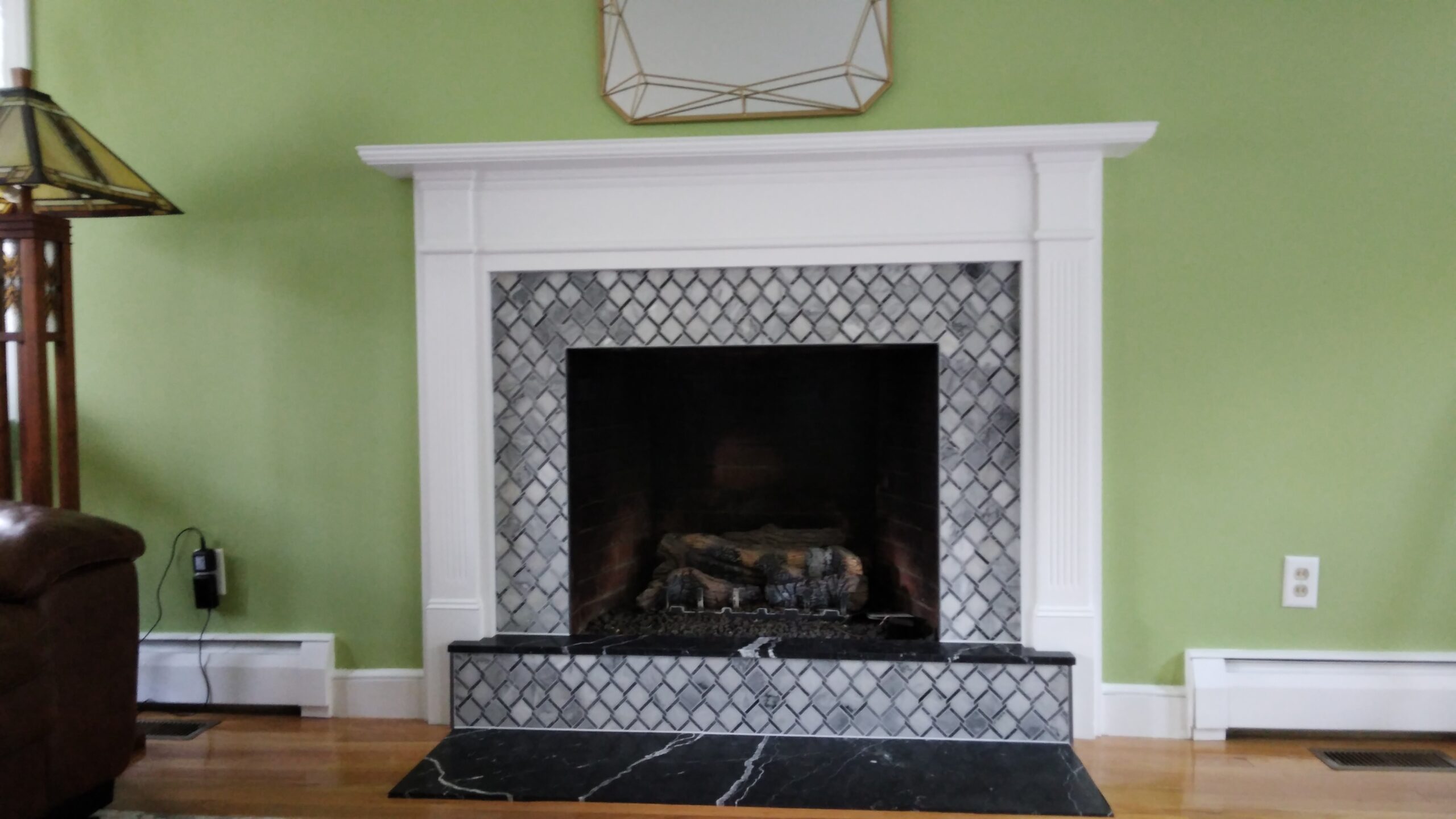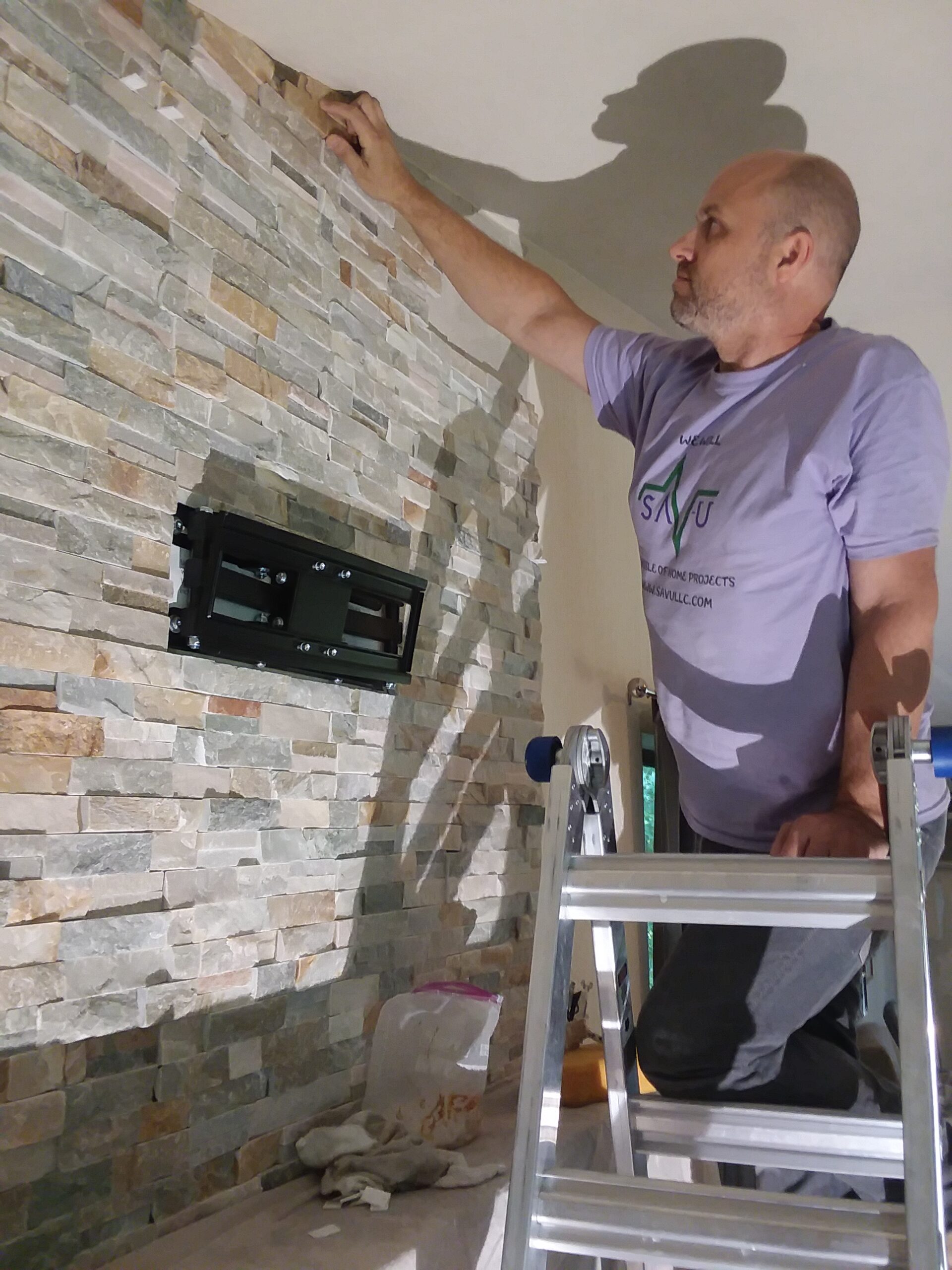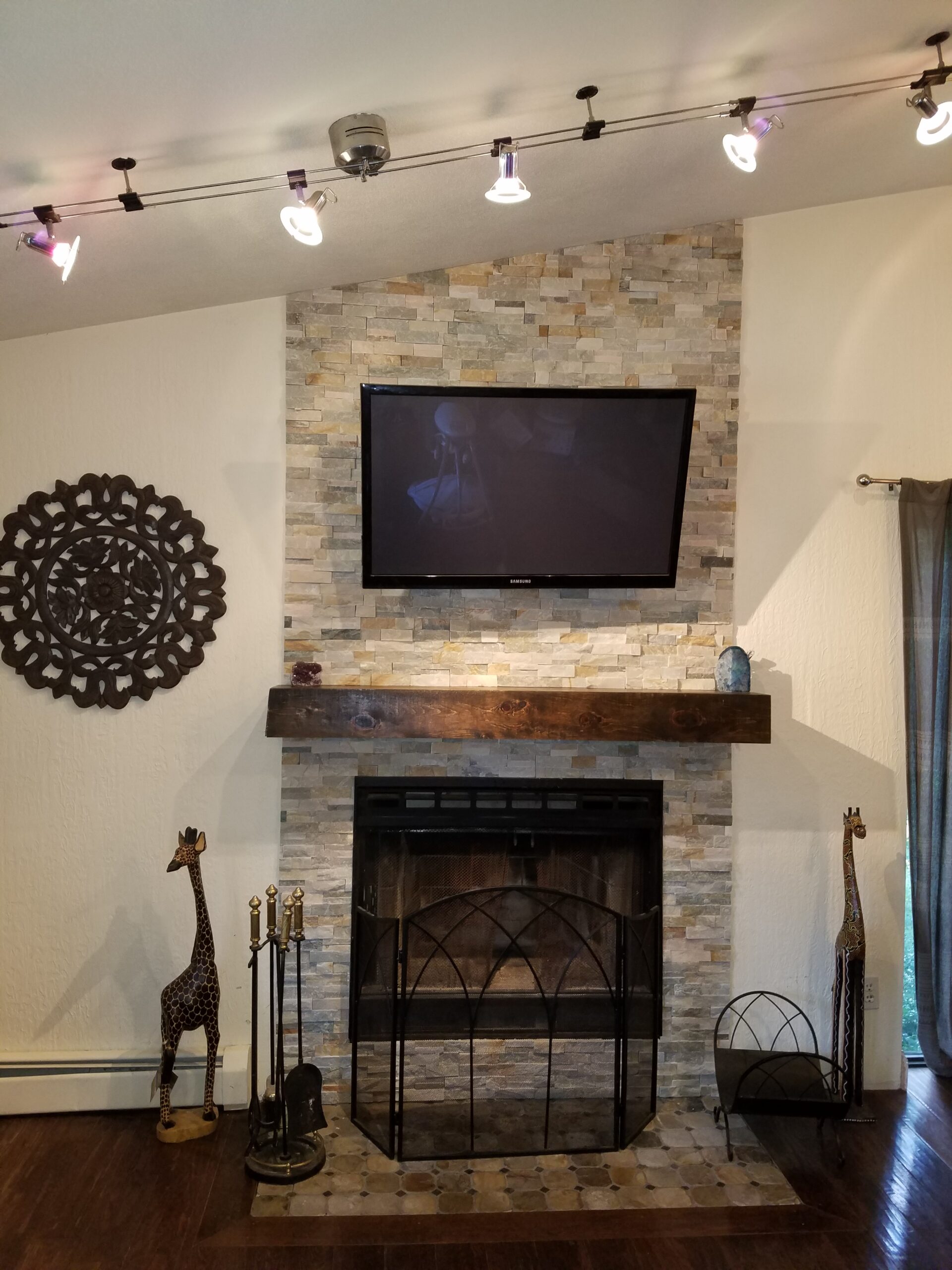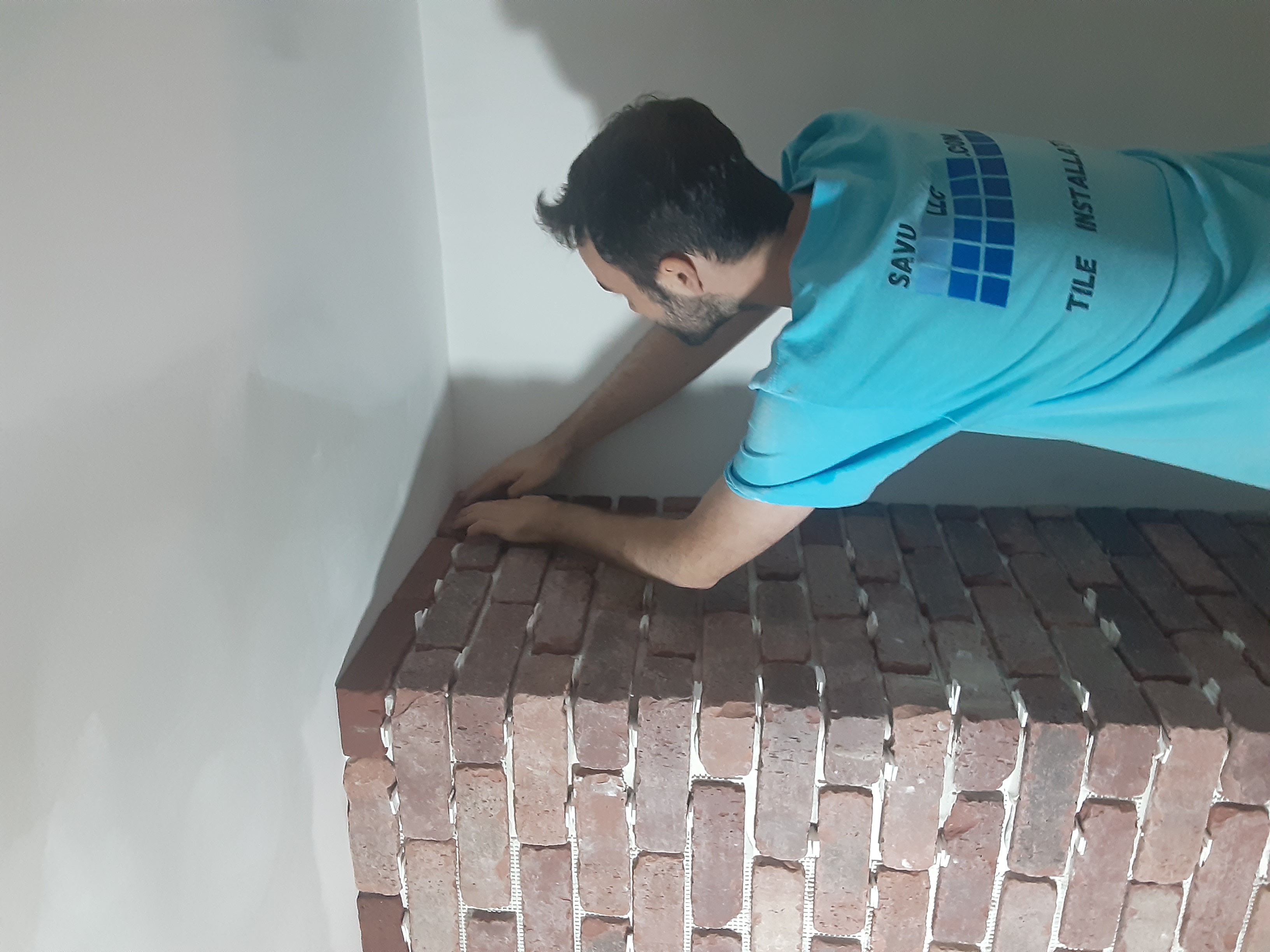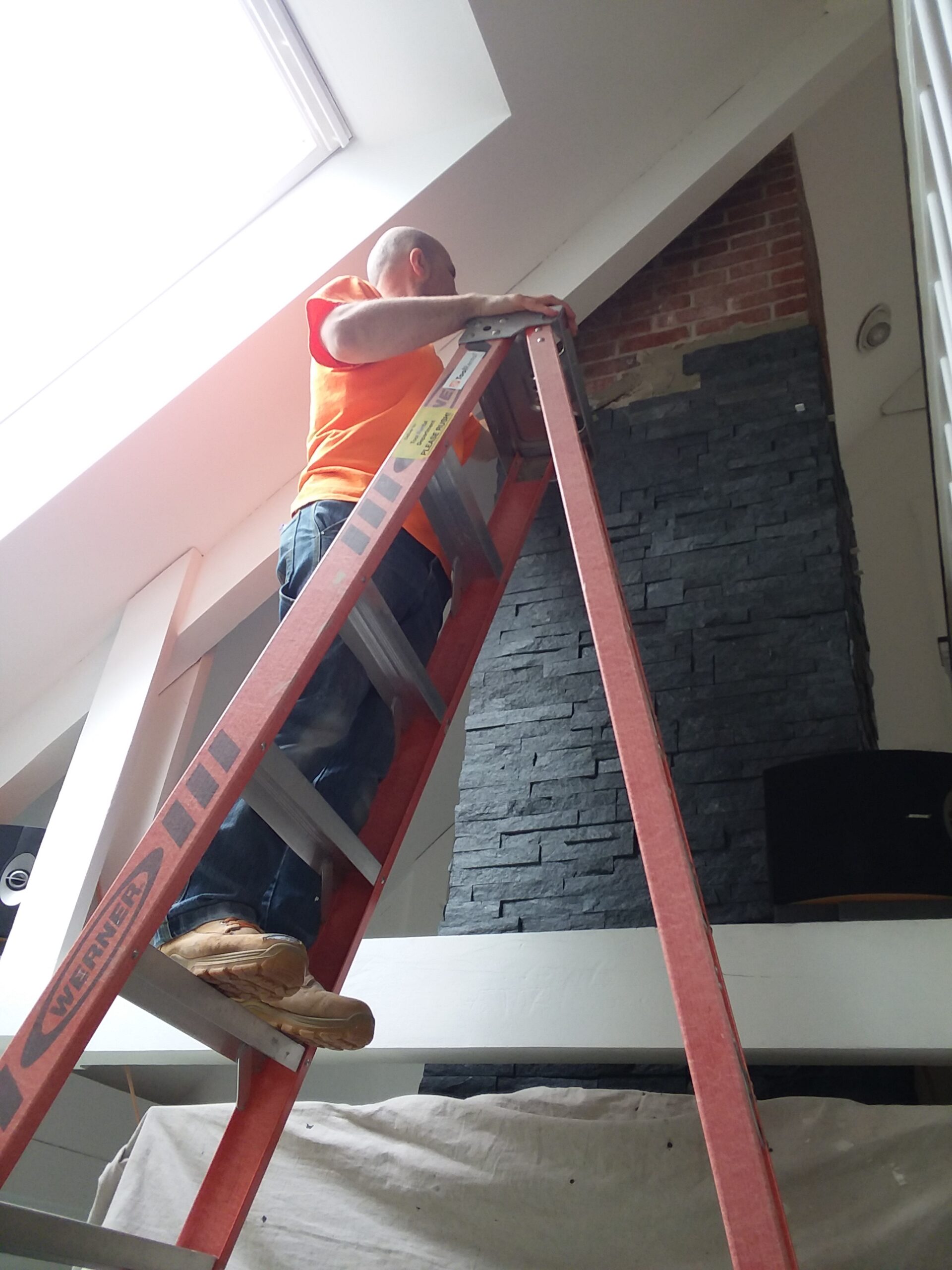Fireplace tile installation
Make your fireplace the heart of your home with our professional tile installations. Add warmth, luxury, and a touch of elegance to your living space.
Reviews
Trustindex verifies that the original source of the review is Google. Vasile and Adam did a bang-up job on my kitchen backsplash. They worked quickly and were so efficient that I had a whole box of tiles left over. I bought the wrong thinset (but Vasile explained why it had been recommended to me) so they ran over to Lowe's and picked up the right kind for me. Every tile is perfectly straight and all the grout lines are even. They even installed the outlet plates when they were done. The price was competitive with other estimates I had gotten but Vasile's communication was so much better that it was a no brainer.Trustindex verifies that the original source of the review is Google. Savu did a beautiful job with our new kitchen backsplash! Vasile and Adam were punctual, very tidy, and even finished early. We were so happy with their work that we asked for their input on another project and plan to hire them again. Their quotation process is also easy, straightforward, accurate and thorough.Trustindex verifies that the original source of the review is Google. Savu did a great job tiling my front entryway. They responded quickly to my quote request with a fair quote. The job was done in one day. Vasile and Adam were friendly and professional. I would work with them again on future projects.Trustindex verifies that the original source of the review is Google. I couldn't be more pleased with Savu! They were very responsive, easy to work with, and did a lovely, extremely professional job. Thank you!Trustindex verifies that the original source of the review is Google. Vasile and Adam did a great job installing the tile for our backsplash. They were a pleasure to work with and were careful to clean up upon completion of their work. Highly recommend them.Trustindex verifies that the original source of the review is Google. Always responded to questions on time respectful of home and petsTrustindex verifies that the original source of the review is Google. Vasile and Adam are a great team. I started a project and didn’t have time to finish. I contacted them and they jumped on the job within a week. Great communication and even better quality of work. They did a three walked shower and a mudroom floor. The mudroom had salvaged brick that wasn’t uniform at all and they did an amazing job getting it flat. Would absolutely recommend them!Trustindex verifies that the original source of the review is Google. Vasile and Adam initially laid a tile floor in our bathroom this past summer. When we needed tile backsplash for our kitchen, we didn't hesitate to contact Vasile again. Prompt arrival, efficient, and great work! Would highly recommend Vasile and Adam.Trustindex verifies that the original source of the review is Google. Vasile and Adam did a great job with a complicated tile. They were reasonably priced and very professional. Would hire again for any future tile projects.Trustindex verifies that the original source of the review is Google. Vasile and Adam were nothing but professional. They cut and placed our tile backsplash with meticulous attention to detail, showed up on time, and stayed on schedule. We couldn’t be happier with the results and will be using them for our next project when we install a tile shower. We will be recommending them to all of our friends and family.Google rating score: 5.0 of 5, based on 94 reviews,showing our latest reviews
Service area
Tile installers in New Hampshire
- Acworth
- Allenstown
- Alstead
- Alton
- Alton Bay
- Amherst
- Andover
- Antrim
- Ashland
- Atkinson
- Auburn
- Barnstead
- Barrington
- Bedford
- Belmont
- Bennington
- Boscawen
- Bow
- Bradford
- Brentwood
- Bristol
- Brookline
- Candia
- Canterbury
- Center Harbor
- Charlestown
- Chester
- Chichester
- Claremont
- Concord
- Contoocook
- Cornish
- Croydon
- Danbury
- Danville
- Deerfield
- Deering
- Derry
- Dover
- Dublin
- Dunbarton
- Durham
- East Kingston
- Enfield
- Epping
- Epsom
- Exeter
- Farmington
- Fitzwilliam
- Francestown
- Franklin
- Fremont
- Georges Mills
- Gilford
- Gilmanton
- Gilsum
- Goffstown
- Goshen
- Grafton
- Grantham
- Greenfield
- Greenland
- Greenville
- Hampstead
- Hampton
- Hampton Falls
- Hancock
- Hanover
- Harrisville
- Hebron
- Henniker
- Hill
- Hillsborough
- Holderness
- Hollis
- Hooksett
- Hopkinton
- Hudson
- Jaffrey
- Keene
- Kensington
- Kingston
- Laconia
- Lee
- Lebanon
- Lempster
- Litchfield
- Londonderry
- Loudon
- Lyndeborough
- Madbury
- Manchester
- Marlborough
- Marlow
- Mason
- Meredith
- Merrimack
- Middleton
- Milford
- Milton
- Mirror Lake
- Mont Vernon
- Moultonborough
- Nashua
- Nelson
- New Boston
- New Castle
- New Durham
- New Hampton
- New Ipswich
- New London
- Newbury
- Newfields
- Newington
- Newmarket
- Newport
- Newton
- North Hampton
- Northfield
- Northwood
- Nottingham
- Ossipee
- Pelham
- Pembroke
- Peterborough
- Pittsfield
- Plainfield
- Plaistow
- Plymouth
- Portsmouth
- Raymond
- Rindge
- Rochester
- Rollinsford
- Rye
- Salem
- Salisbury
- Sanbornton
- Sandown
- Seabrook
- Sharon
- Somersworth
- South Hampton
- Spofford
- Springfield
- Stoddard
- Strafford
- Stratham
- Sullivan
- Sunapee
- Suncook
- Sutton
- Swanzey
- Temple
- Tilton
- Troy
- Wakefield
- Walpole
- Warner
- Washington
- Weare
- Webster
- Wilmot
- Wilton
- Winchester
- Windham
- Wolfeboro
Tile installers in Massachusetts
- Acton
- Allston
- Amesbury
- Andover
- Arlington
- Ashburnham
- Ashby
- Ashland
- Ayer
- Baldwinville
- Bedford
- Belmont
- Berlin
- Beverly
- Billerica
- Bolton
- Boston
- Boxborough
- Boxford
- Braintree
- Brighton
- Brookline
- Burlington
- Byfield
- Cambridge
- Carlisle
- Charlestown
- Chelmsford
- Chelsea
- Clinton
- Cohasset
- Concord
- Danvers
- Dedham
- Devens
- Dorchester
- Dover
- Dracut
- Dunstable
- East Boston
- Essex
- Everett
- Fitchburg
- Framingham
- Gardner
- Georgetown
- Gloucester
- Groton
- Groveland
- Hamilton
- Hanover
- Harvard
- Haverhill
- Hingham
- Holbrook
- Holliston
- Hopkinton
- Hubbardston
- Hudson
- Hyde Park
- Ipswich
- Jamaica Plain
- Lancaster
- Lawrence
- Leominster
- Lexington
- Lincoln
- Littleton
- Lowell
- Lunenburg
- Lynn
- Lynnfield
- Malden
- Manchester-by-the-Sea
- Marblehead
- Marlborough
- Mattapan
- Maynard
- Medford
- Melrose
- Merrimac
- Methuen
- Middleton
- Milton
- Mission Hill
- Nahant
- Natick
- Needham
- Newbury
- Newburyport
- Newton
- Newton Centre
- Newton Highlands
- Newton Lower Falls
- Newton Upper Falls
- Newtonville
- North Andover
- North Billerica
- North Chelmsford
- North Reading
- Norwell
- Norwood
- Peabody
- Pepperell
- Princeton
- Quincy
- Randolph
- Reading
- Revere
- Rockport
- Roslindale
- Rowley
- Roxbury
- Royalston
- Salem
- Salisbury
- Saugus
- Scituate
- Sherborn
- Shirley
- Somerville
- South Boston
- Sterling
- Stoneham
- Stow
- Sudbury
- Swampscott
- Templeton
- Tewksbury
- Topsfield
- Townsend
- Tyngsborough
- Waban
- Wakefield
- Waltham
- Watertown
- Wayland
- Wellesley
- Wenham
- West Newbury
- West Roxbury
- Westford
- Westminster
- Weston
- Westwood
- Weymouth
- Wilmington
- Winchendon
- Winchester
- Winthrop
- Woburn
- Worcester
Q & A
A good strategy is to use tile that is typically used for backsplashes. These tiles are usually made to be resistant to high temperatures.
- Ceramic: They are generally resistant to heat and can be used on a fireplace surround without any issues.
- Porcelain: They are even more durable and heat-resistant than regular ceramic tiles. They can be used on both the surround and the hearth of a fireplace.
- Marble: Marble is generally resistant to heat and can be used on a fireplace without any issues.
Yes, it is generally possible to install tile over a brick fireplace.
Stacked natural stone is the trend for fireplace tile in 2024.
The German schmear technique is a trendy design and can add a rustic look to your fireplace.
German schmear uses wet mortar, while whitewash uses diluted paint or whitewashing compound.
